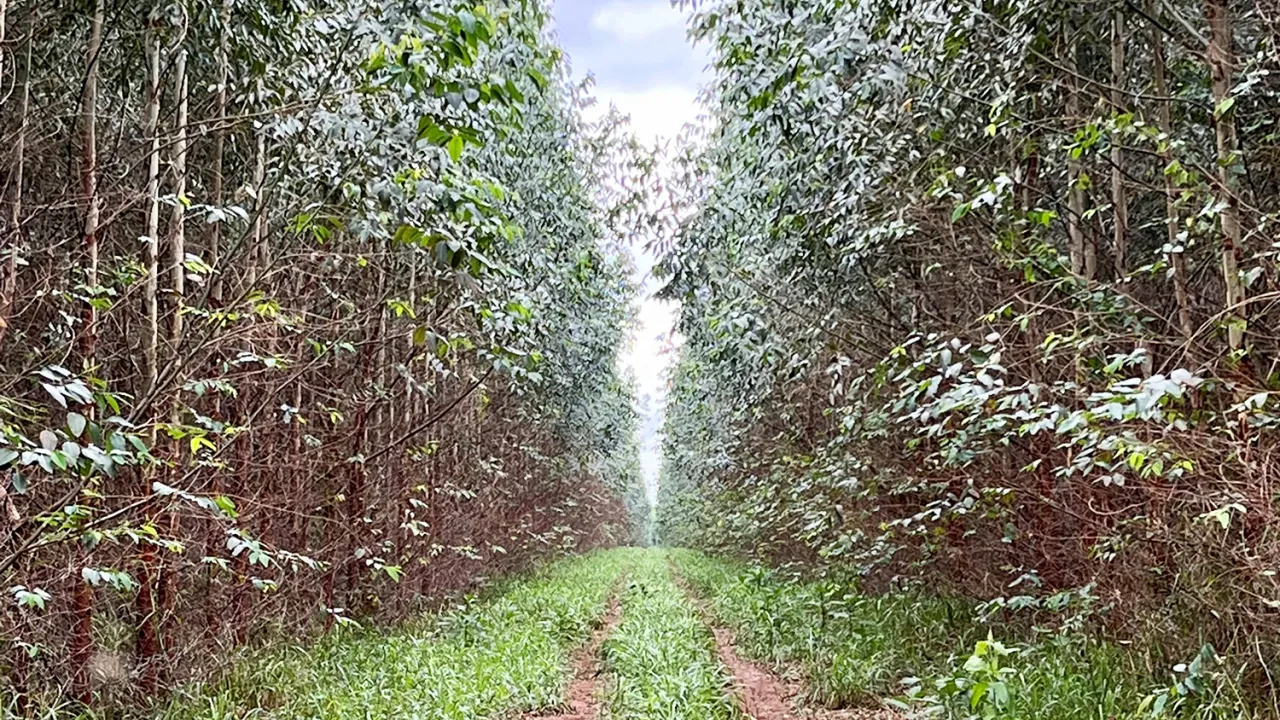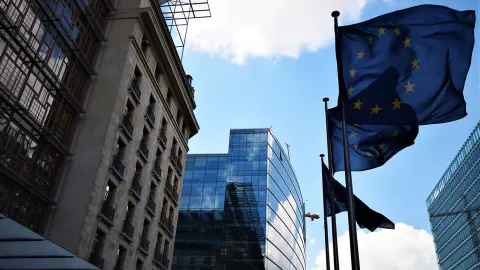Countries and markets 2/2022: Opportunities for Finnish export companies open up in the Brazilian pulp and paper sector and the green transition in Chile

Brazil and Chile are among the ten biggest countries of Finnvera's export credit guarantee exposure. In Brazil, the pulp and paper sector is particularly strong. In Chile, the energy sector is undergoing a major transition towards renewable energy.
Published date
Latin America is a significant growth market for Finnish exports and an area where there has been a lot of demand for Finnvera's export credit guarantees. After the coronavirus pandemic has subsided, South America has been experiencing an economic boom compared to many other continents. In Latin America, the economy and politics go hand in hand. The variation in political cycles and ideologies makes long-term economic policy difficult, which increases the challenges for Finnish export companies. Finnvera guarantees political and commercial risks of Finnish exporters. A knowledge of the market is very important for both exporters and the export credit agency.
Agricultural products and raw materials form the backbone of the Latin American economy. Demand for product exports has strengthened the macroeconomic situation of the countries in the region, as government deficits have decreased and the balance of payments has turned positive. On the other hand, higher energy prices, low consumer demand and pervasive inflation are pushing down the scales. Energy prices treat countries very differently depending on whether they are energy exporters or importers.
In Latin America, there are further concerns due to the weakening of local currencies as the United States has started to raise interest rates again, attracting currency investments back to Western core markets.
In Latin America, the economy and politics have gone hand in hand. In elections, voters often react to economic difficulties by voting for the opposition. Carrying out long-term economic policy is difficult. In Latin America, delivering credible economic policy has indeed been largely left to institutions, such as central banks.
One sign of positive development is that institutions in the region have developed in a more independent direction and are less susceptible to the effects of shifts in political power than before, even though political steering still exists. The development of democracy as a whole can also be seen as positive, even though headlines often mainly highlight bad news. Political populism has gained a strong foothold in the region.
Brazilian economy is growing, but political uncertainty continues
Violence, corruption, populist presidents’ policies and illegal rainforest logging are often what is reported on Brazil in Finland. However, Brazil is also a developed and modern growth market of 214 million people, whose needs correspond very well to the offering of Finnish companies and provide a growing market for exports from Finland.
Brazilian institutions are independent and strong and the country's regulatory environment is good. The downside of this is bureaucracy. The government steers Brazil's economic policy, and policies often change along with the government. However, the credibility of an economy is built over a long period of time, and Brazil's credibility is solid in the eyes of business and financiers. For decades, its independent central bank has built a monetary policy that enables both domestic and foreign investors to trust that they can and should invest in the country. Investments, in turn, mean more opportunities for Finnish exporters.
The coronavirus pandemic hit Brazil severely, but its economy already made a full recovery in 2021. In 2022, the IMF has already increased the country's economic growth forecast on two occasions to 2.8%. Economic growth is projected to continue in the country in the next few years, albeit at a slow pace.
In the presidential elections of autumn 2022, power shifted again from right to left. In terms of economic development, the change of president is not considered to be very dramatic. A great deal of the practical activities will depend on the government that President Lula is currently putting together before his entry into office in January. Economic policy will probably continue to be rather pragmatic, perhaps now more predictable, but also more focused on recovery measures, which will increase the country's deficits and indebtedness and cause suspicions about the sustainability of economic management. This may affect investors' confidence, which in turn would reduce vital foreign investment in a country where investment needs are huge and infrastructure bottlenecks are one of the main barriers to faster economic growth.

São Paulo, Brazil.
Finnvera's guarantees for Brazil
Brazil has traditionally been one of the largest countries in which Finnvera has exposure. At the moment, Finnvera's exposure and binding offers in Brazil amount to as much as EUR 2.5 billion. The pulp and paper industry is particularly strong, with a great deal of investments from Brazilian forestry giants. This opens up opportunities for Finnish pulp and paper technology exports. When financing pulp and paper projects, Finnvera strictly complies with international environmental and social impact criteria. The telecommunications sector has been another strong industry in exports to Brazil that Finnvera has funded. However, the country's economy is large and abounding in export opportunities regardless of the sector. Finnvera can guarantee exports with many different financial instruments. Payment experiences in Brazil are mostly good.
In Chile, a transformation in the energy sector offers opportunities for export trade
In Chile, there was a shift in power to the left already at the beginning of 2022. The most recent elections in Chile have also steered power from the right to the left in turns. Democracy works, but long-term planning is difficult. Perhaps the most important reforming process in the country is its constitutional reform, which has become an ambitious, multi-generational process. The reform project began with extensive civil riots in autumn 2019, which were rooted in major social and economic inequalities. Chile has long been one of the wealthiest countries in Latin America, with the greatest income inequalities on the continent. However, a new draft constitution was voted down in a referendum in September. There is broad consensus on the need for reform, but not on the content.
Chile is a very American-style society in which the role of the state has been kept small and in which many public sector activities, such as water and energy, have been managed by means of the private sector and the market economy.
Chile has traditionally been an energy importer, the only Latin American country that has no fossil energy raw materials, oil, gas or coal of its own. For a country in the energy-intensive mining industry, this has been expensive, and the entire national economy has been subject to fluctuations in energy prices. Now the energy sector is undergoing a major transformation in which Chile is rapidly shifting its entire energy production system to renewable energy. The country is classified as one of the best areas in the world for solar and wind power production. Production from renewable energy sources has quickly become cheaper and more efficient than conventional fossil energy. In addition, the country is actively launching green hydrogen production, which, according to calculations, in Chile is the cheapest in the world due to local renewable energy production conditions.
The ongoing change also offers enormous potential for Finnish operators in the field who are able to provide solutions to the challenges of renewable energy production, such as energy storage and electricity regulation.
Finnvera's guarantees for Chile
Chile has risen to the top countries in terms of Finnvera's country exposure in recent years, and Finnvera's export credit guarantees in the country already amount to almost one billion euros. Chile is an exception among Latin American countries: As a high-income OECD country, it belongs to the best country risk category (0/7, i.e. advanced economy) along with other Western countries. Not only does this indicate low risk, but it also means that the pricing of the guarantee premium for the country consists of a market price and the country does not have a so-called minimum guarantee premium price, as is the case with other so-called political risk countries. All export financing instruments can be used for exports to Chile as long as the buyer's credit risk and financing structure are in order.
The author:
Mika Relander, Senior Adviser, is responsible for monitoring Latin American countries and country policies at Finnvera. After a hiatus due to the coronavirus, in autumn 2022, Mika Relander visited Brazil, Chile, Paraguay and Colombia. Finnvera regularly meets the borrowers of the export credits it guarantees and participates in joint ministerial export promotion trips by the Team Finland network.
Finnvera’s country policies and contact persons can be found in the country classification map.
Read also:
Countries and markets 1/2022:Trade with Russia ended – could Central Asia be a substitute export market? | Finnvera
More information about the Team Finland network and services.



